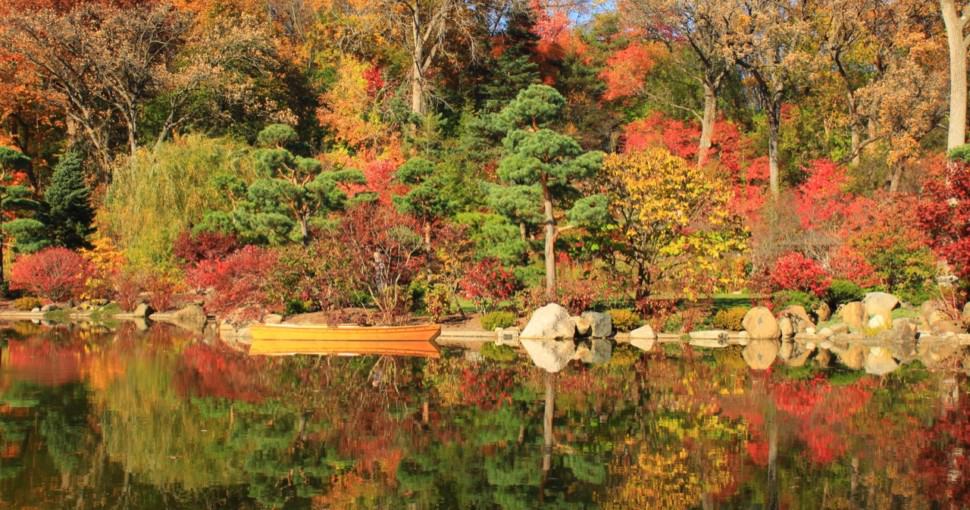The Midwestern region of the United States is home to Illinois, “the Prairie State.” The area is marked by lush farmlands, rolling hills, wetlands, and forests. Even one of the largest cities in the state and the country, Chicago, lies on the border of Lake Michigan, surrounded by trees of all kinds.
Contents
- 1. Oak (quercus)
- 2. Flowering Dogwood (cornus florida)
- 3. Ash Trees (fraxinus)
- 4. Sassafras (sassafras albidum)
- 5. Willow (salix)
- 6. Crabapple Trees (malus)
- 7. Locust (genus)
- 8. Eastern Redbud (cercis canadensis)
- 9. American Elm (ulmus americana)
- 10. Maple (acer)
- 11. Black Cherry (prunus serotina)
- 12. Birch (betula)
- 13. Eastern Red Cedar Tree (juniperus virginiana)
- 14. American Beech (agus grandifolia)
- 15. Red Mulberry Tree (morus rubra)
- 16. Mockernut Hickory (carya tomentosa)
- 17. Pine (pinus)
- 18. Sycamore (platanus)
- 19. Basswood (tilia americana)
- 20. American Holly (ilex opaca)
- 21. Magnolia (magnolia grandiflora)
- 22. Hackberry (celtis occidentalis)
- 23. Eastern Cottonwood (populus deltoides)
Today, you can find more than 250 species of trees, native and introduced, in Illinois. Around 218 of these species can be located in Chicago alone. According to the State of Illinois Department of Natural Resources, 75% of the wildlife habitat in Illinois survives in these trees, including 420 vertebrate species and 120 bird species.
The diversity of tree species in Illinois is what makes the spring season so special in this state. Warmer weather and longer hours of sunlight allow these trees to bloom. You can expect to see the stunning foliage of trees and shrubs all throughout spring.
One of the many unique things about Illinois is the expansive urban forestry throughout its cities and suburbs and the wide diversity of tree species. Around 98% percent of Illinois forests are composed of hardwood tree species, and 43% of those hardwood species are white and red oak.
1. Oak (quercus)
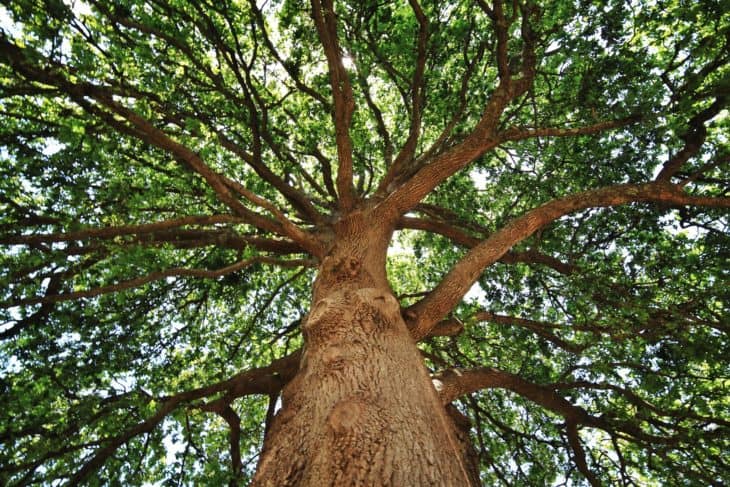
Deciduous and evergreen oak trees provide food and shelter for the local wildlife in Illinois. They need plenty of space to grow, and most oak species can grow up to 80 feet tall and 80 feet wide. The white oak is known as the State Tree of Illinois and is an excellent shade tree. Its wood is used for furniture, lumber, construction, barrels, and flooring.
2. Flowering Dogwood (cornus florida)
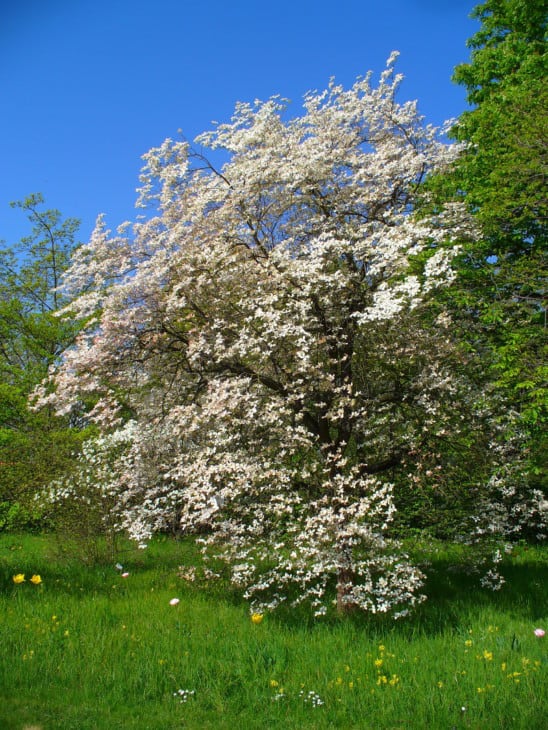
Flowering dogwood trees are deciduous trees that you can easily identify by their prominent white flower clusters, barks, and berries (drupes). There are several types of dogwood trees worldwide, but Illinois is home to the flowering dogwood, which you can also find in Missouri and Indiana. These trees can grow to be 15 to 25 feet tall and have smooth-edged leaves with curving veins.
3. Ash Trees (fraxinus)
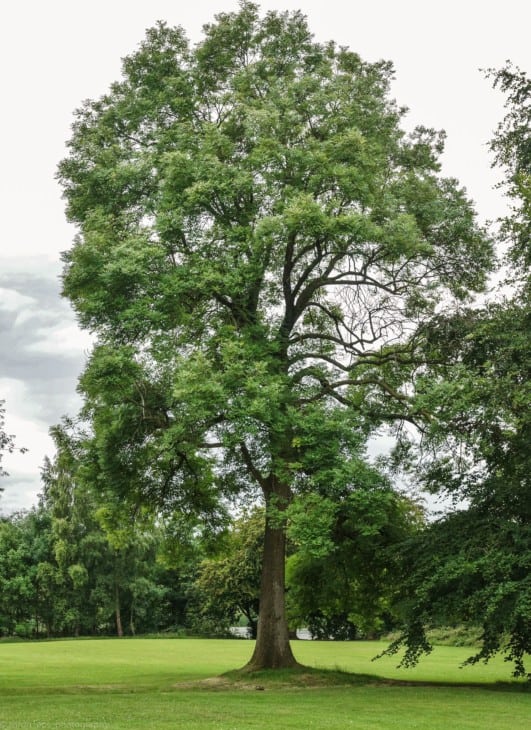
Ash trees are tall, flowering trees that usually grow 40 to 60 feet tall. They have simple leaves that grow opposite on their coils and flowers that grow in clusters. These flower clusters are typically white, green, or purple. Green and white ash trees are most common throughout Illinois, but, unfortunately, they have been disappearing from the region due to the destruction caused by the emerald ash borer (jewel beetle).
4. Sassafras (sassafras albidum)
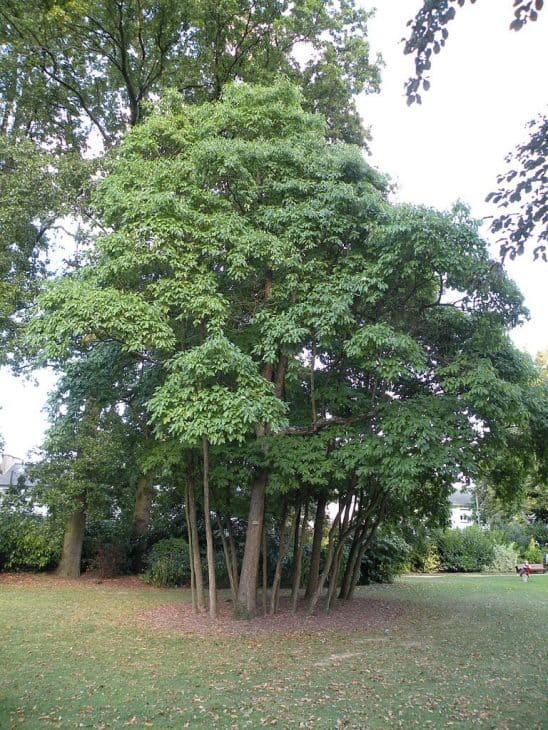
The sassafras albidum tree is native to Illinois, particularly the Chicago area. It is a deciduous tree that can grow anywhere from 15 to 40 feet tall. It is known for its distinct fragrance. You can sometimes find different leaf patterns on one sassafras tree. The flowers of a sassafras tree are yellow and have six petals. Female sassafras trees also bear dark-blue drupe berries.
5. Willow (salix)
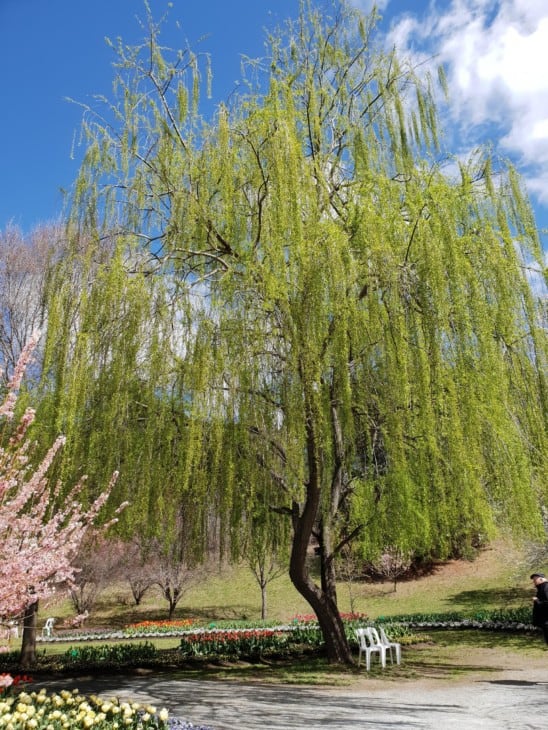
Willow trees are known for their slender branches and expansive root systems. They can grow between 6 and 8 feet per year. Most willow trees have elongated leaves with feather veins. The flowers of a willow tree grow in clusters and cause the branches to sag, giving the tree its signature look.
6. Crabapple Trees (malus)
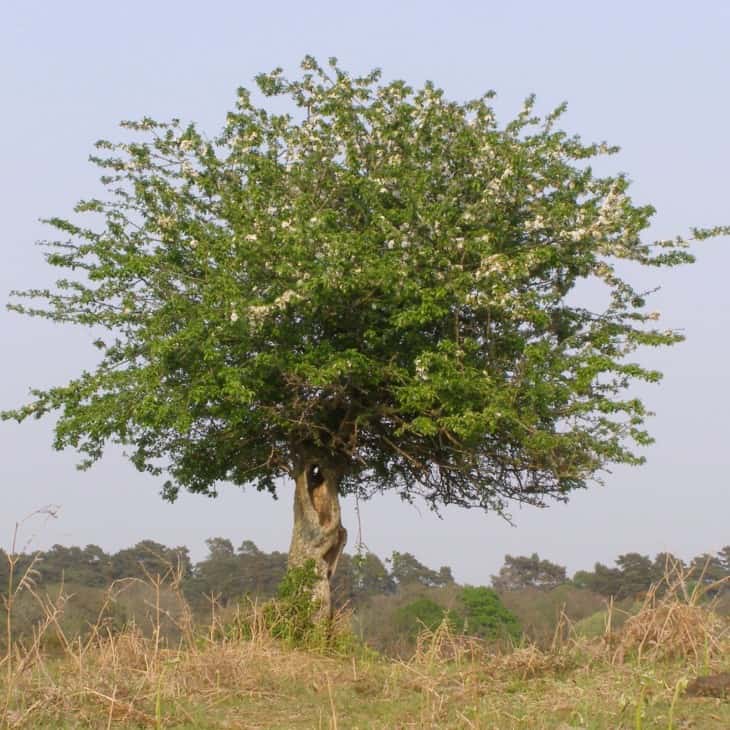
Crabapple trees are popular throughout the Midwest region, including Illinois. These trees are small, so they are a great addition to many landscapes. They have vibrant and colorful spring flowers in different shades of red, purple, and pink. These trees have large fruits that appear in various colors, including orange, yellow, green, red, and purple.
7. Locust (genus)
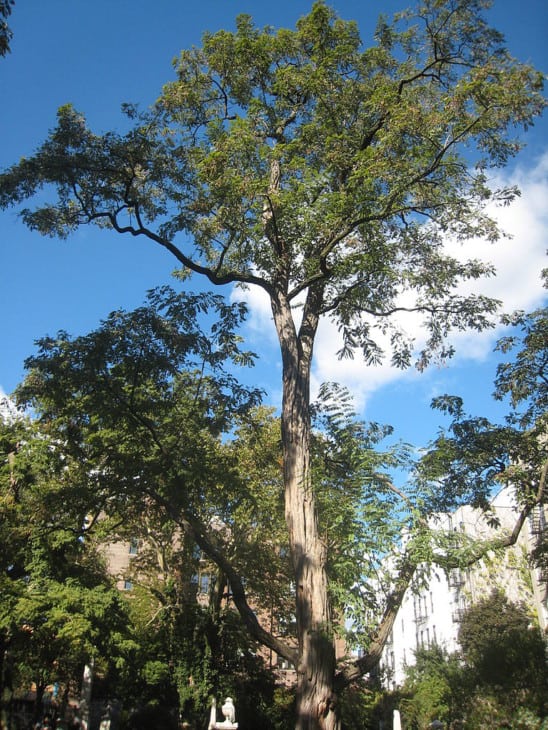
Locust trees are deciduous trees with thorns or prickles. In Illinois, you can find two types of locust trees: the honey locust and the black locust. Both of these locust species flower in the spring and produce drooping clusters of cream-colored flowers. Locust trees are native to the Chicago region and can transform grasslands into forested areas.
8. Eastern Redbud (cercis canadensis)
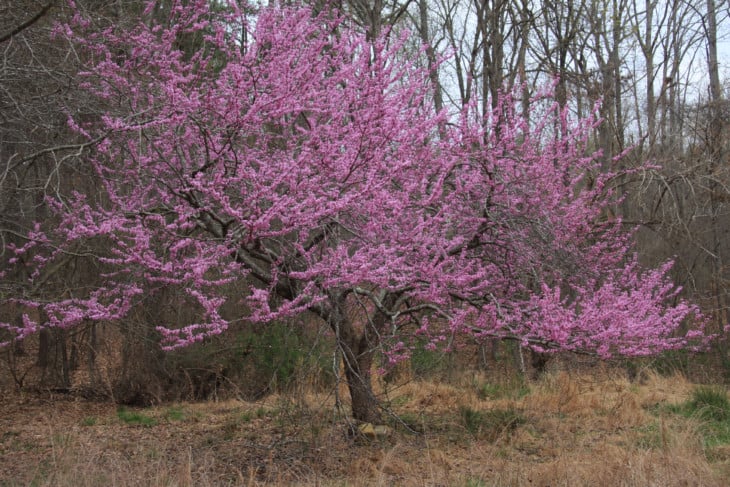
The eastern redbud is a medium-sized deciduous tree usually planted for ornamental purposes. It can grow anywhere between 15 and 40 feet. It has bright purplish-pink flowers that bloom along its dark branches in early spring. The leaves of an eastern redbud tree are heart-shaped and turn yellow in the fall. Because of their size and color, eastern redbud trees are great additions to landscapes.
9. American Elm (ulmus americana)
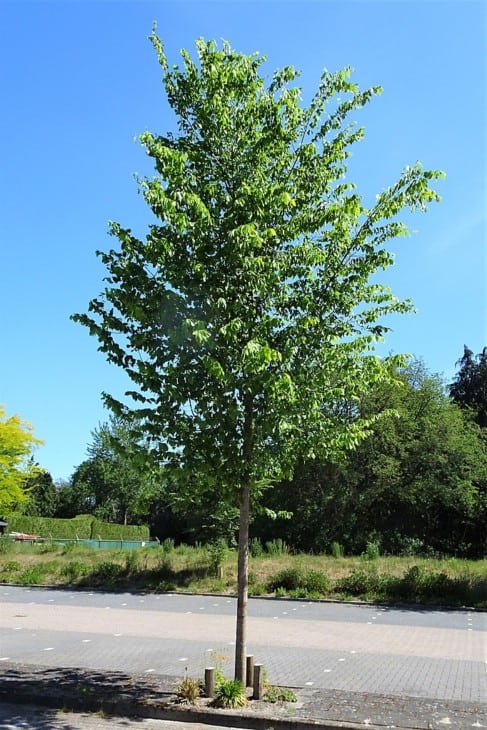
American elm trees are large deciduous trees that can withstand the harsh weather conditions of the Midwest. They were very popular in the 19th century, but their population decreased after the introduction of Dutch elm disease in the 50s. You can still find these trees in Illinois today. They are known for their large canopies and leaves that turn golden-yellow in the fall.
10. Maple (acer)
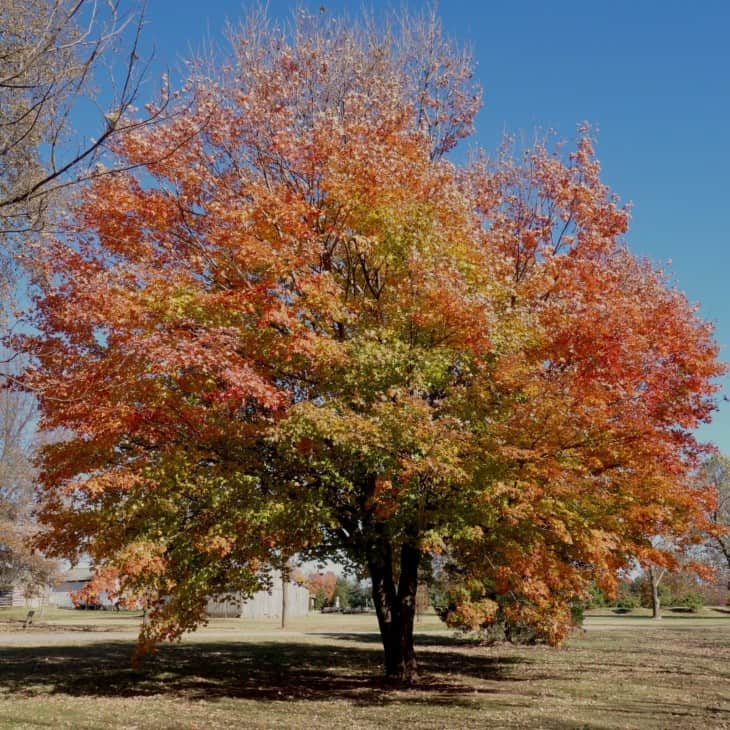
Maple trees are the recognizable trees in Illinois. Most maple species in the state have large lobed leaves that turn red, orange, and yellow during fall. These trees also produce fruits called samaras, also known as “helicopters.” Depending on their species, maple trees can be either be used for shade or as ornamental trees.
11. Black Cherry (prunus serotina)
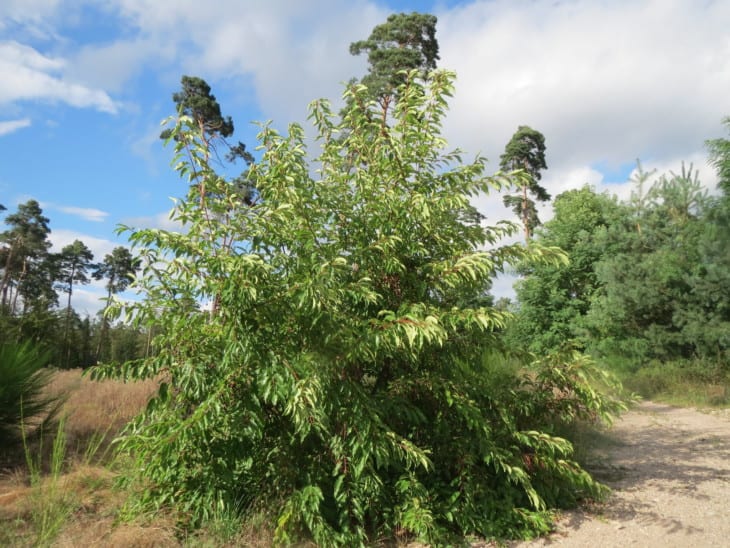
Black cherry trees are deciduous trees native to North America. You can also find them in New Jersey and Indiana. These trees can be easily identified by their dark gray/black barks, white flower clusters, and reddish-purple cherry clusters. They grow quickly and can reach heights between 50 and 80 feet. They are primarily found in wooded areas but have become common in urban settings because of their pretty flowers.
12. Birch (betula)
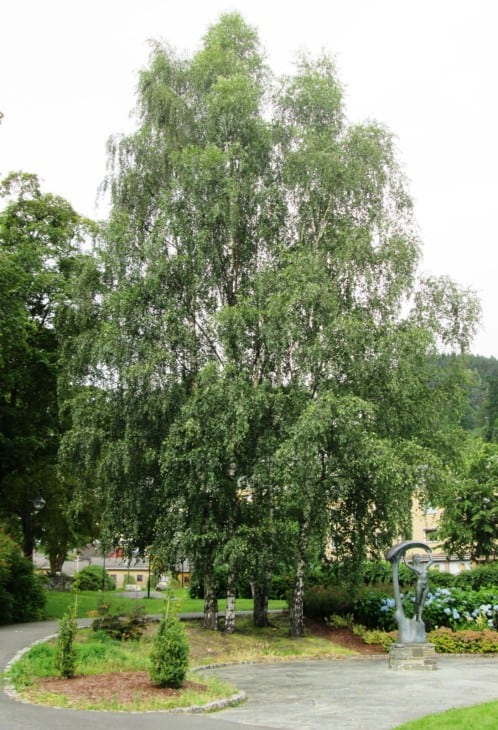
Birch trees are medium-sized, deciduous trees. There are around 15 known species of birch trees native to the United States. You can easily recognize these trees by their bark which peels off like paper. Birch trees have flowers that grow in cylindrical flower clusters and oval leaves that turn to vibrant red, orange, and yellow shades in the fall.
13. Eastern Red Cedar Tree (juniperus virginiana)
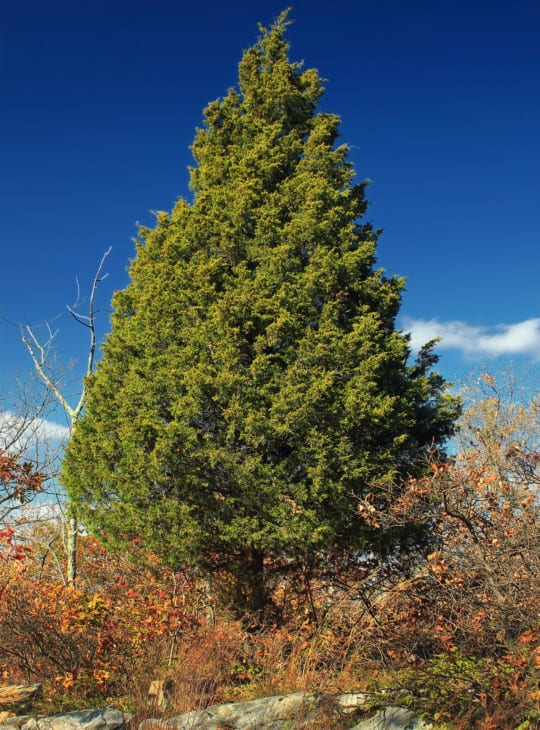
Eastern red cedar trees are hardy coniferous trees that produce berries and cones. They range widely in size from 3 to 5-foot shrubs to 40-foot tall trees. Their foliage appears like sharp needles or scale-like leaves. Male red cedar trees produce small cones that make pollen, while female red cedar trees produce blue-gray berry-like fruits.
14. American Beech (agus grandifolia)
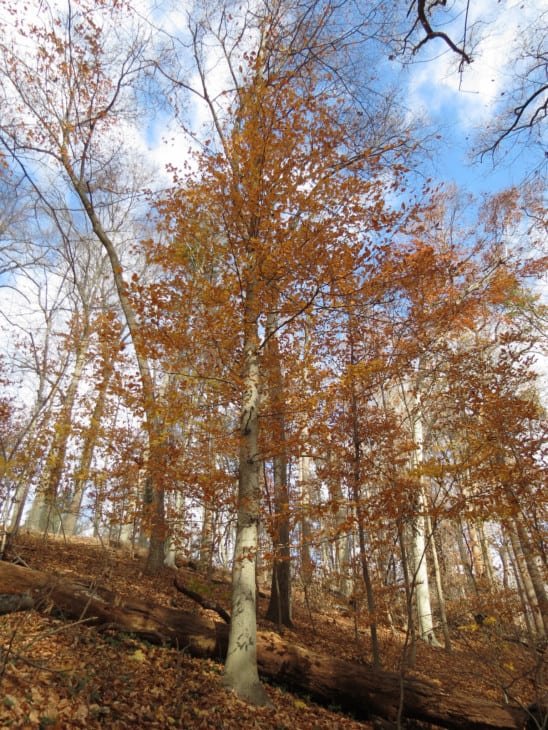
The American beech tree is a large deciduous tree with an average height of 50 to 70 feet. It can live for several hundred years. It has smooth, silver-gray bark and oval-shaped leaves with lightly toothed edges. American beech trees produce three-sided brown beech nuts that contain seeds. These trees are shade-tolerant and typically found in wooded areas.
15. Red Mulberry Tree (morus rubra)
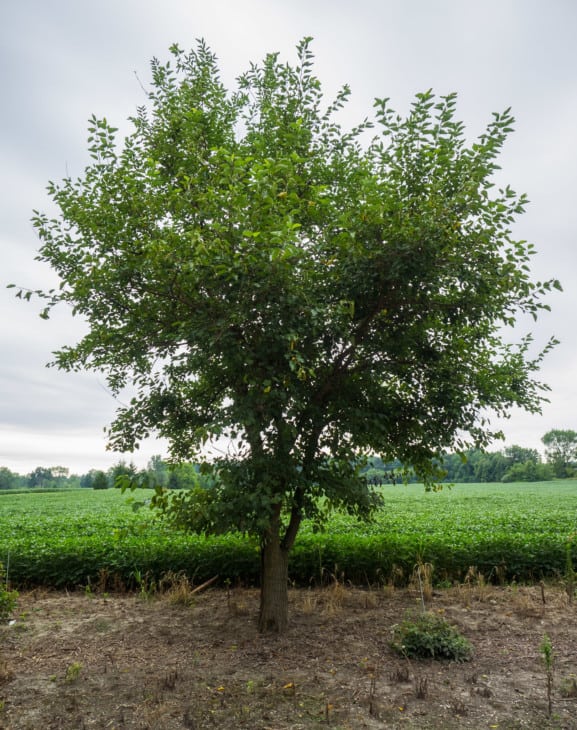
Red mulberry trees are tall trees that range from 40 to 70 feet in height. They have lobed or oval-shaped leaves with lightly serrated edges. These trees produce small clusters of yellowish-green or reddish-green flowers. They also produce red mulberries that look similar to blackberries at first but turn dark shades of red or purple when ripe.
16. Mockernut Hickory (carya tomentosa)
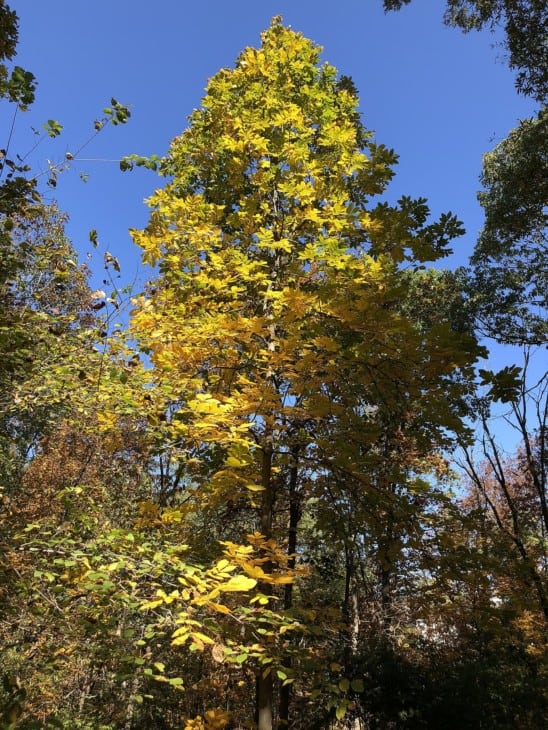
Hickory trees are tall and deciduous trees that grow around 50 to 100 feet. There are about a dozen species of hickory trees native to the United States, but you can find the mockernut hickory in abundance in Illinois. These trees can easily be identified by their shaggy bark, large nuts, and slender, oval-shaped leaves that grow in opposite pairs.
17. Pine (pinus)
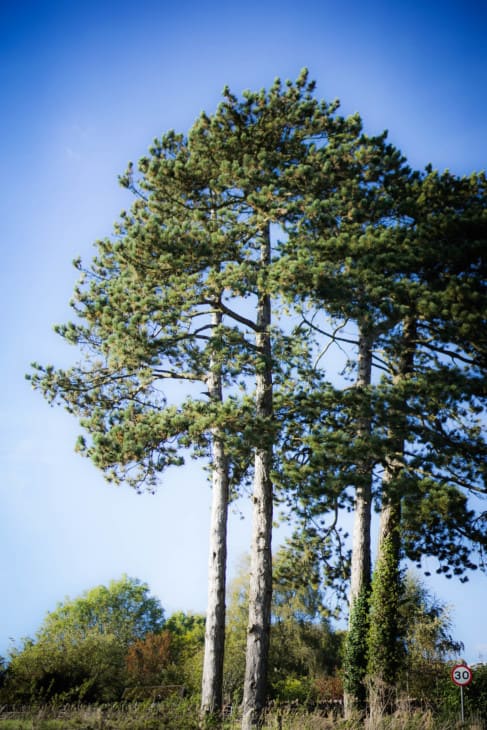
Pine trees are evergreen coniferous trees with around 126 accepted species. These trees can grow anywhere from 50 to over 200 feet and live for more than 1000 years. You can identify them by their green needles and large brown pine cones. The eastern white pine, pitch pine, and red pine are a few pine tree species native to Illinois, Indiana, and West Virginia.
18. Sycamore (platanus)
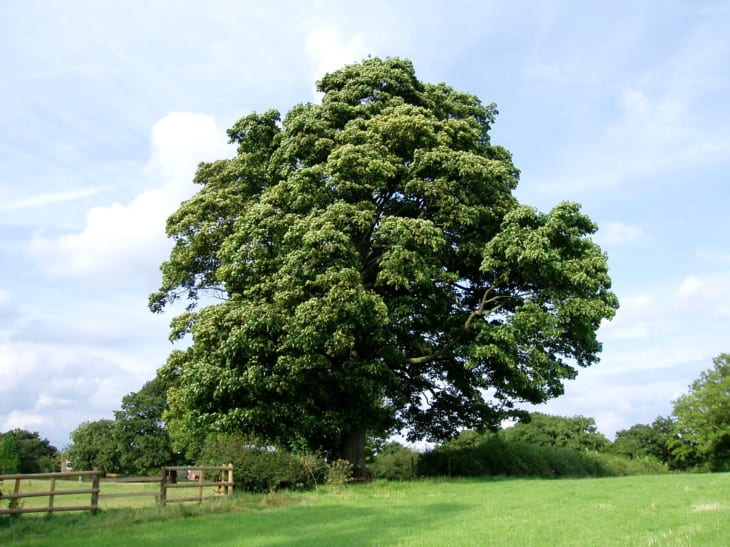
Sycamores are fast-growing deciduous trees that can grow more than 100 feet tall. There are only four known species of sycamore trees in the world, with the American sycamore being native to the Chicago area. Sycamore trees have dense canopies and lobed leaves. They have a flaky, grayish-brown bark that has patches of lighter-colored wood underneath.
19. Basswood (tilia americana)
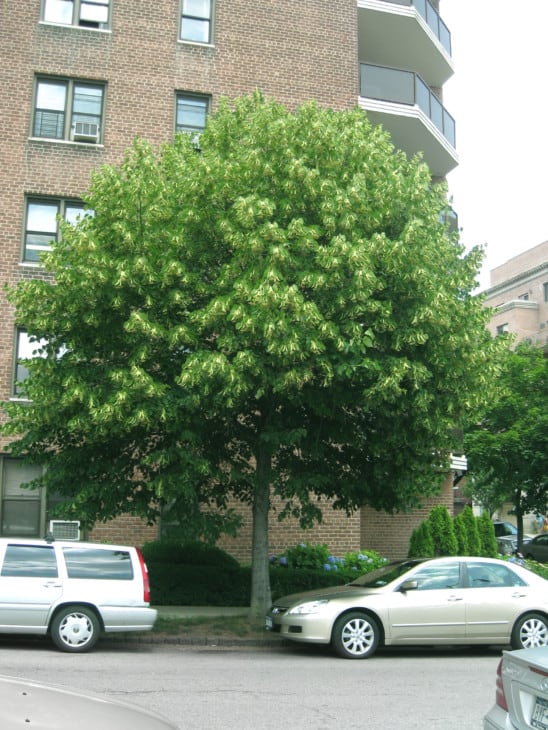
Basswood trees are medium to large trees with distinctly shaped canopies. There are around 30 known species of basswood trees in the world, with the American basswood being native to Illinois. This species has dense, pyramidal canopies and large heart-shaped leaves with lightly serrated edges. It produces small and fragrant flowers in hanging clusters that attract songbirds during summer.
20. American Holly (ilex opaca)
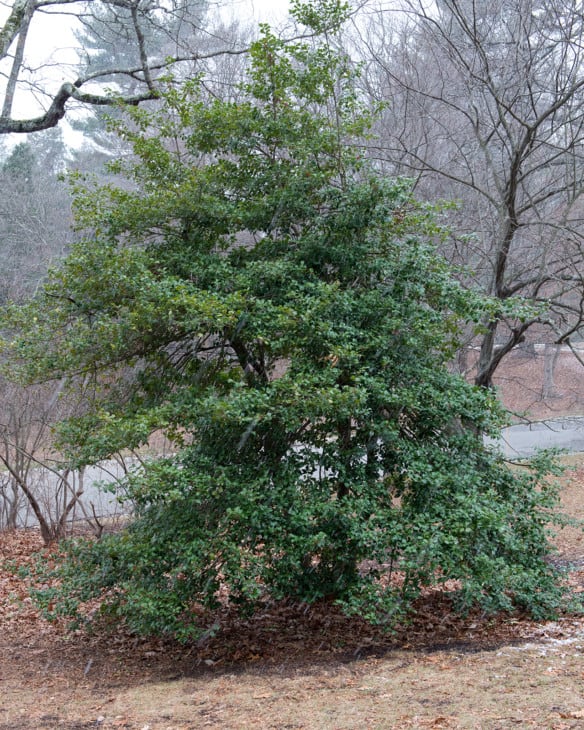
The American holly is the most common type of evergreen holly tree found in Illinois. It has oblong leaves with pointy teeth. The bright red berry-like fruits are the most defining characteristic of an American holly tree. These fruits only grow on female holly plants but need to be fertilized by the male plants.
21. Magnolia (magnolia grandiflora)
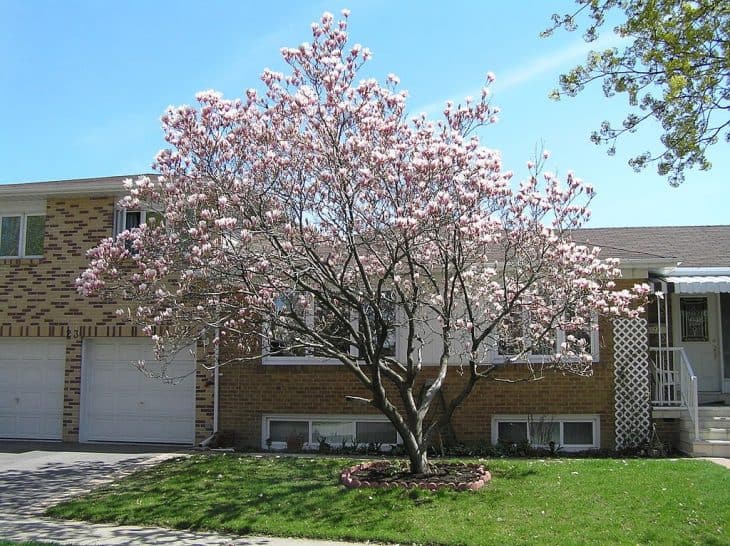
Magnolia trees are ancient plant species that can be traced back to 95 million years. There are currently eight species of magnolia trees in the United States, and the magnolia acuminata is the only species native to Illinois. The defining characteristics of magnolia trees are their cone-shaped fruits and showy, fragrant white flowers.
22. Hackberry (celtis occidentalis)
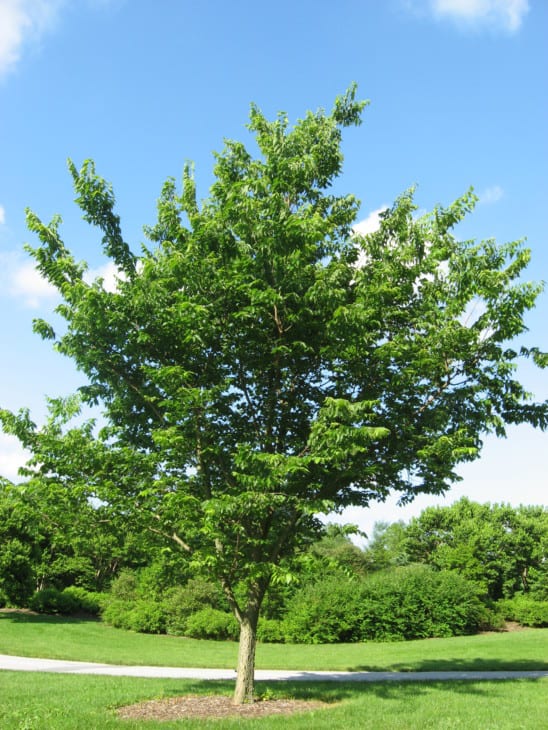
The hackberry is a native tree that looks a lot like the American elm tree. It grows fast and has a vase-like shape, ideal for providing shade around the house. It is also a strong tree that is not prone to too much breakage. The fruit produced from this tree, the hackberry, is edible and highly nutritious.
23. Eastern Cottonwood (populus deltoides)
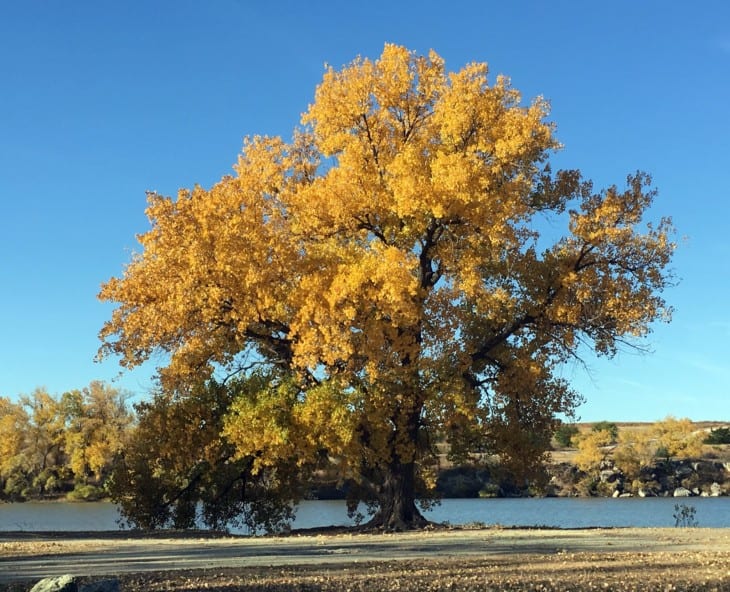
Eastern cottonwood is a deciduous cottonwood tree native to North America. It initially has a smooth, silvery-white bark that becomes hard and gray as the tree matures. It also has triangular leaves with curved teeth along the edges. The flowers of the eastern cottonwood tree are reddish on male trees and yellowish-green on female trees.

